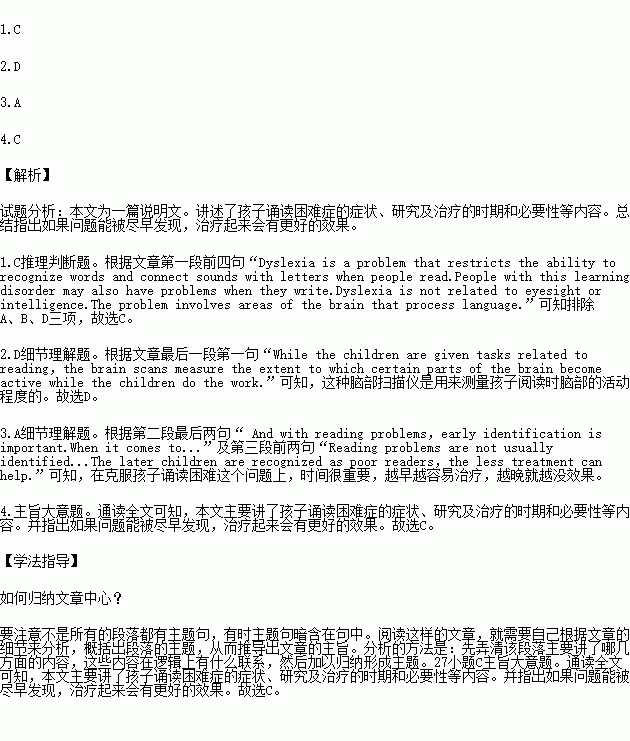题目内容
Dyslexia is a problem that restricts the ability to recognize words and connect sounds with letters when people read. People with this learning disorder may also have problems when they write. Dyslexia is not related to eyesight or intelligence. The problem involves areas of the brain that process language. Brain scientists are studying whether they can predict which young children may struggle with reading to provide them with early help. John Gabrieli at the Massachusetts Institute of Technology is leading the study of five-year-olds in about twenty schools in the Boston area.
They studied in the schools with kindergartens.And for all the children joining in the study, they give them a brief set of paper-and-pencil tests to look at which children appear to be at some risk for struggling to read. So far, fifty of them have been examined in a scanner, a special machine, to show brain activity. Written tests are not always able to identify dyslexia or other problems, while brain scans may offer a more scientific way to identify problems. And with reading problems, early identification is important. When it comes to helping children overcome reading difficulties, the younger the child, the more effective they are.
Reading problems are not usually identified until a child is in the third or fourth grade. The later children are recognized as poor readers,the less treatment can help. And, as Professor Gabrieli points out, poor reading can make education a struggle. Reading is everything. Even math and science have textbooks.
While the children are given tasks related to reading, the brain scans measure the extent to which certain parts of the brain become active while the children do the work. The scientists say they are pleased with early results from the study, but have a long way to go.
1. Dyslexia affects the part of brain concerning ________.
A. eyesight B. intelligence
C. language D. emotion
2. Dyslexia problems are more likely to be identified through ________.
A. speech contests
B. reading efficiency
C. listening comprehension
D. brain scans
3.According to the passage, which of the followings has the best time to overcome reading difficulties?
A. Tom, a boy in the kindergarten.
B. Kate, a high school leaver.
C. Jane, a primary school student.
D. Steve, a man in his thirties.
4. What is the passage mainly about?
A. An effective way to identity Dyslexia at an early stage.
B. A learning disorder involving one’s intelligence.
C. Dyslexia — a problem affecting one’s reading and writing.
D. A possible solution to the problems related to Dyslexia.
 一课一练课时达标系列答案
一课一练课时达标系列答案
